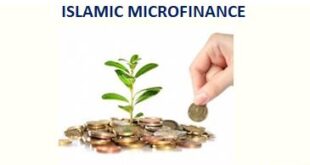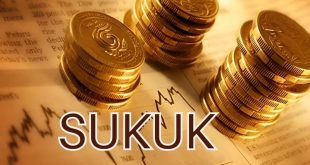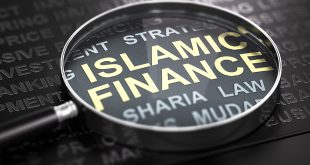The world today is on the lookout for the next BRICS to take the global economy to the next level, but it has had little or no luck in that regard as yet.

While it is really about the growth story, aspiring economies are yet to tap into a growing segment that shows obvious potential, which is the Islamic finance and the Muslim lifestyle market.
Visiting Islamic finance expert Rushdi Siddiqui, Former Dow Jones Indexes Global Director and Global Head Thomson Reuters in Islamic finance, who was in Sri Lanka recently professed that with the $ 1.6 trillion Islamic finance and $ 1.67 trillion Muslim lifestyle market is most certainly next BIRCS opportunity.

“Emerging is the obvious telltale signs of this BRICS opportunity that are being slowly made use of by non-Muslim countries such as the UK and South Africa. They are not tapping into these markets to appeal to the religious constituents but what they are doing is absorbing liquidity from this market place that operate with certain rules of engagement,” said Siddiqui, who is currently serving the advisory boards of Falah Capital (USA), Crescentrating (Singapore) and a Board Member of Dinarstandard (USA).
Noting is not about providing liquidity but absorbing it, he stated Islamic finance is more about collateral based finance as when looking at its substance there has to be an underlying asset with certain rules of engagement. “It is about the substance and opportunity and not the form,” he emphasised while delivering his presentation on ‘Islamic Finance: Myths, Busters and Current Global Situation’, where he spoke on a variety of areas on the topic.
The birth of faith-based index and its significance
In 2008 Dow Jones launched the Dharma Index which measured the performance of companies selected according to the value systems and principles of Dharmic religions, especially Hinduism and Buddhism.

Having pioneered faith based index in 1999 by having launched the Islamic Market Indexes in 1999, Dow Jones President M. Petronella stated that launch of the Dow Jones Dharma Indexes marked a major step in the institution’s effort to further expand its range of faith-based indexes.
At that time the objective was to have an approach of faith based index, and not just Islamic, where Western-based institutions were to bring an alignment on one platform.
The Vatican’s official newspaper Osservatore Romano stated in an article in 2009 that the ethical principles on which Islamic finance is based may bring banks closer to their clients and to the true spirit which should mark every financial service.
Soon after by 2010 the Stoxx Europe Christian Index listed 533 European companies that only derive revenues from sources approved according to the values and principles of the Christian religion. Stoxx Chief Executive Hartmut Graf at that time noted that there has been an increasing investor demand for a transparent index that helps funds buy stocks of companies that are religiously compliant and make revenue in line with Christian values.
The most recent success is the US-based Amana Funds that recorded this year total assets under management of more than $ 4 billion where majority of the investors were non-Muslims.
“This phenomenon is that it is a subset of conventional space and asset management, weather it is Dharma, Christian or Islamic. There are certain principles and those come in certain sources that are equated into screens, which then produces an index and creates a pulse in the market place. The faiths basically have come in unifying denominator which does no harm and certainly a way forward,” he expressed.
Substance over form
Taking the example of the Kingdom of Saudi Arabia (KSA), there is not one institution that has the word ‘Islamic’ in their name and Turkey, which calls it participative finance, tries not to tie it down to any faith.
The Arab spring countries, Libya, Egypt and Tunisia were reluctant to embrace Islamic finance as there were of the view it will be a back door to extremism. Since these countries were not moving towards a direction in addressing the needs of their people that is aligned to their values, Siddiqui opined they got the wrong conclusion.
“Islamic finance and Halal is in all the BRICS and G20 countries and not one of those has had their constitution amended to include faith. In the UK there has been a separation to include faith and that for that the country is a great example,” he said.
Islamic banks are actually changing their name and want to have a more inclusive approach and that starts off with international expansion. The industry is noted to be maturing and is realising it doesn’t need the crutch of Islam to hold it up.
According to a study by Ernst and Young, only 30 million customers have been touched by Islamic finance out of a population of $ 2 billion. Islamic banking assets are over $ 1 trillion, which is 1% of the global banking assets.
“Islamic banks don’t innovate. The innovations comes from the windows and the consulting firms, so there is a change that is really taking place when moving away from form to focus on substance,” noted Siddiqui.
He added that while Islamic finance is a merger of faith and finance, it is also vicegerency, divine accountability, good and forbids evil, all of which equates to Corporate Social Responsibility (CSR).
Sources of law
According to Siddiqui, the sources of law are self-explanatory and it is those that have to be quantified into products be it screening or financing products.
However, scholars can differ on Shariah compliance views due to difference in interpretation.
Interpretation plays a major role in determining Shariah acceptability and scholars may not always agree especially across the five different schools of jurisprudence, also known as ‘Madhab’, as the schools can vary in their level of conservatism.
For example certain Islamic finance practices followed in Asia are not considered Shariah-compliant in Saudi Arabia where the Hanbali school of thought, considered to be the most conservative is practiced.
“Everything is permissible in this space unless the conditions are violated. It is basically confirming what is known. But the challenge in this space, the ‘S’ world comes up in this space in every conference, in every seminar and every regulators meeting. If there is standardisation money will be flowing. It is one of the many challenges in this space,” observed Siddiqui.
Growth drivers.
What is pushing the market? It took about 40 years for the market to reach $ 1 trillion and it is expected that the $ 2 trillion mark will be reached in the next four years, and the reason for that are transactions, new players and new asset classes.
“The countries that are coming into this space are coming at a very interesting time. If we are to stage and manage Islamic finance or participating finance into ability to viability to scalability, where we are at this stage is durability. It survived the external shocks of credit and financial crisis. It was not hit because confidence is seeping into Islamic space,” he noted.
It is observed that all the major companies and players, both in the financial and consumer sector are in this space, and that is not because of religious reasons but because they see this as the next BRICS, he added.
Looking at the top 30 emerging markets, the top 10 are Muslim majority countries. “If you look at where the consumption is headed globally, it is about ethical consumption. The organic movement is very strong now,” he pointed out.
One of the key growth drivers for this market is the internet, social media and mobile revolution. According to Siddiqui, it is interesting to note in the Muslim world is that it has a lot of parallelism with China.
Taking the example of Alibaba, the venture took off mainly due to China’s external environment which is conducive to its business model. While the per capita is increasing into the penetration, today Muslims have 1.3 billion mobile phones which is 21% of the world’s mobile phones. “If you assume 10% are smart phones, imaging the B2B opportunity through mobile devices,”
He added that it is not only the external drivers in the environment but also the internal drivers. “Interesting here is growth and according to the IMF, the OIC as a whole is growing faster than the world. So you are capturing the crust.” On intra trade within the OIC, the Islamic development wants to facilitate to increase the trade from 17% to 25% which actually represents an asset class opportunity with trade finance funds.
“For any country that wants to be in this space, they would want to do so to tap the petrol liquidity which is about $ 90 per barrel and will continue to be in that range in the near future. From that perspective you need an enabling infrastructure and that for Sri Lanka is needed. This basically presents the opportunity of standardisation of Sharia and tax regulation. Once you have the enabling infrastructure, you need to have the right product priced competitively, along with selecting the right distribution channel and marketing practice,” he professed.
“Get the infrastructure right, the product goes on that, and then it will be able to compete on its own merits,” added Siddiqui.
Sukuk
The current trend in this sphere is noted to be the green Sukuk with environment, sustainability and governance now recognised as important issues for growth.
Malaysia having recently announced an infrastructure of regulation for green Sukuk has taken the lead in this regard.
“The point here is that whatever you can do with a conventional bond you will be able to do with a Sukuk. What is interesting is the universe of takers is going to be much larger since you have the convention providers and then there are the Islamic buyers,” he said.
The biggest challenge in the Sukuk is in having a platform which can bring the Sukuk as a self-registered product that will allow taking immediate advantage of the credit pricing.
The fact that it is affecting liquidity is that it is not just affecting public sector play but the private sector play. Nevertheless, to tap into this liquidity it is necessary to have an enabling environment.
Equity screening
“You start off with a larger universe and typically the universe of compliant company. Interesting is that there are more Sharia compliant companies in the Teleguide stock exchange than in most of the country and the reason for that is the technology play,” he said.
While all the companies have debts, the challenge in that space is the authenticity towards compliance. About 85% of the Amana funds are from non-Muslims and the assets and the management are $ 4 billion.
Looking at the assets under management to deposit ratio, KSA and Malaysia has the largest ratio of 33% but in the US it is about 143%. This typically means there is no money in the capital market and it is by people making deposits.
Halal and Muslim lifestyle market
On the Halal food side this is an incredible growth story. On the demographics side this is a BRICS story, it is a consumer noncyclical which means that if there is a recession the segment may consume less but will become depositors.
The key issue is supporting micro-SME to become SMEs and then to become export ready entrepreneurs. A recent survey on entrepreneurship showed there is thirst for young people wanting to capture this opportunity since the infrastructure exists.
“Convergence, this is where the huge opportunity lies, in the convergence of this silo-Muslim lifestyle market. My point here is that they see that Muslims consume a lot and they want to put companies who cater to this on the market. It is basically straightforward but has to make economic sense,” noted Siddiqui.
The lifestyle market which is $ 1.6 trillion is projected to be $ 2.7 trillion. With Sri Lanka now getting prominent with logistics, it has the potential to tap into the $ 15 billion Halal products transportation arena.
“In logistics, Sri Lanka is on the map here; it is on the global Halal superhighway. The country will export $ 54 billion worth of food by 2020. It needs to build a ramp to that highway to connect to the marketplace,” he said.
In the food sector it is important to note that Muslims consume more foods than China or the USA. “You need to continue to keep this lead because of the growth, so there are companies such as Nestle, Unilever and a million other SMEs supplying them so this is going to continue to grow.”
Post Disclaimer | Support Us
Support Us
The sailanmuslim.com web site entirely supported by individual donors and well wishers. If you regularly visit this site and wish to show your appreciation, or if you wish to see further development of sailanmuslim.com, please donate us
IMPORTANT : All content hosted on sailanmuslim.com is solely for non-commercial purposes and with the permission of original copyright holders. Any other use of the hosted content, such as for financial gain, requires express approval from the copyright owners.
 Sri lanka Muslims Web Portal Sri Lanka Muslims News Center
Sri lanka Muslims Web Portal Sri Lanka Muslims News Center



